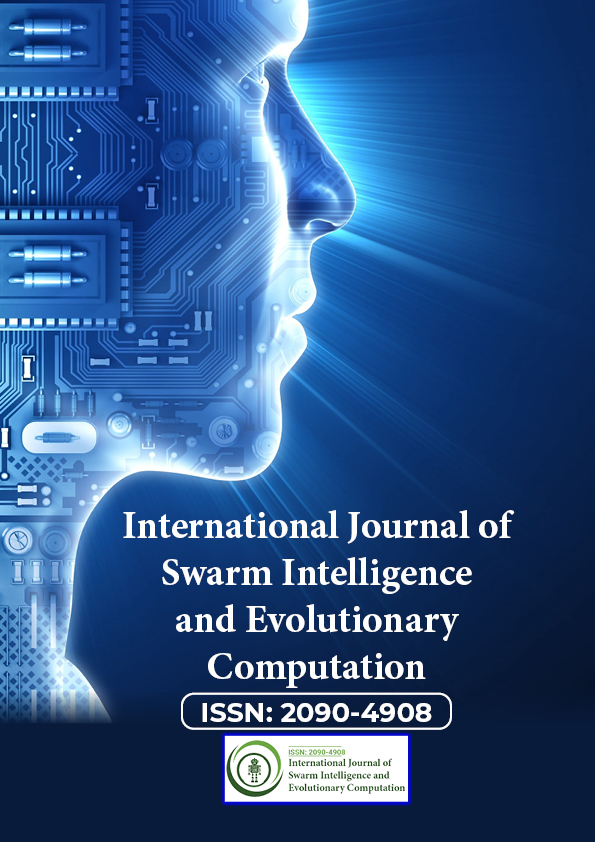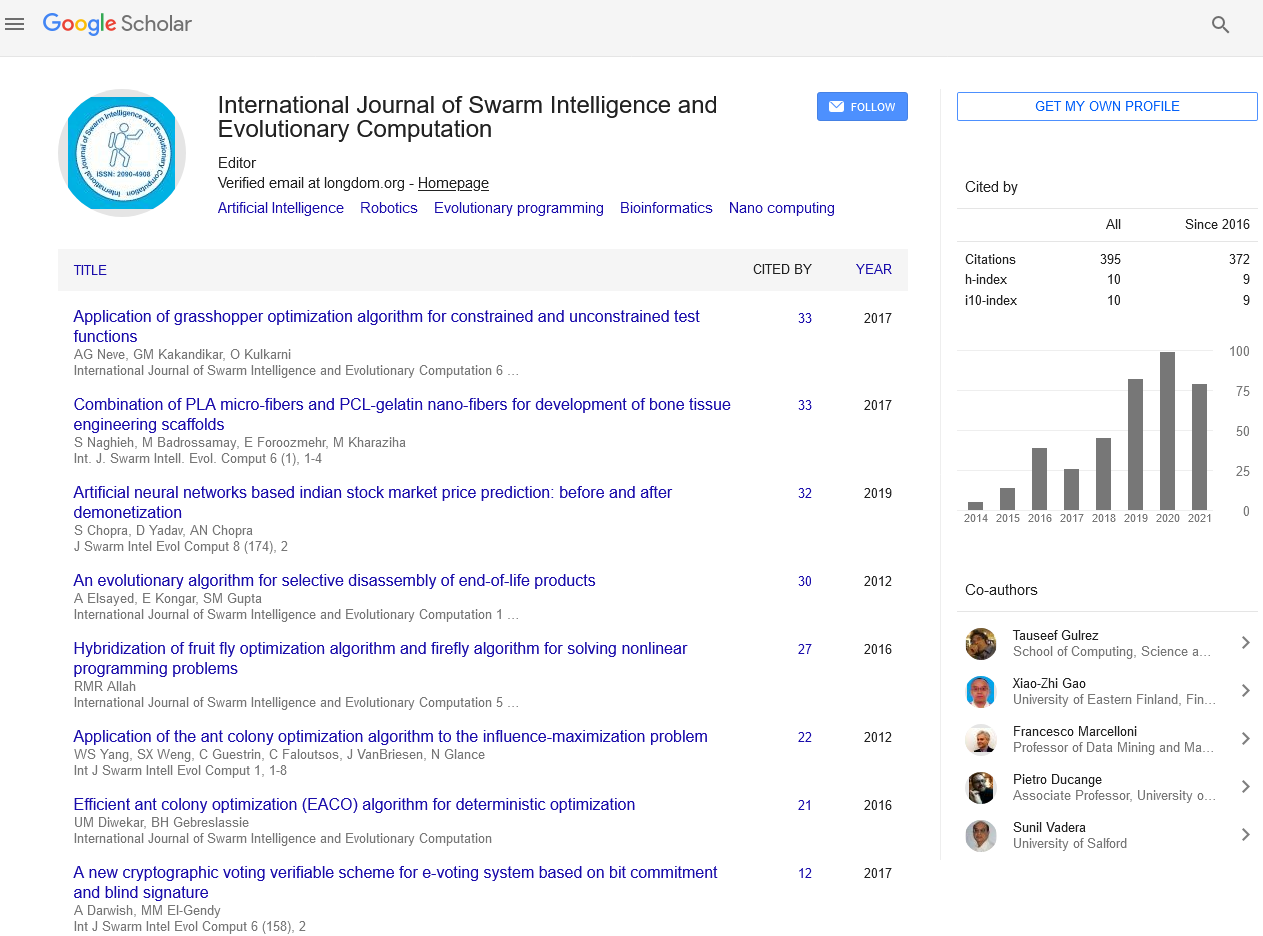Indexed In
- Genamics JournalSeek
- RefSeek
- Hamdard University
- EBSCO A-Z
- OCLC- WorldCat
- Publons
- Euro Pub
- Google Scholar
Useful Links
Share This Page
Journal Flyer

Open Access Journals
- Agri and Aquaculture
- Biochemistry
- Bioinformatics & Systems Biology
- Business & Management
- Chemistry
- Clinical Sciences
- Engineering
- Food & Nutrition
- General Science
- Genetics & Molecular Biology
- Immunology & Microbiology
- Medical Sciences
- Neuroscience & Psychology
- Nursing & Health Care
- Pharmaceutical Sciences
Commentary - (2023) Volume 12, Issue 1
Use of Soft Computing Techniques in Bioinformatics
Rahul Mishra*Received: 21-Dec-2022, Manuscript No. SIEC-23-19866; Editor assigned: 23-Dec-2022, Pre QC No. SIEC-23-19866 (PQ); Reviewed: 07-Jan-2023, QC No. SIEC-23-19866; Revised: 16-Jan-2023, Manuscript No. SIEC-23-19866 (R); Published: 25-Jan-2023, DOI: 10.35248/2090-4908.23.12.293
Description
Soft Computing is a set of methodologies that, in one form or another, provide intelligent information processing capabilities for dealing with real-world problems. It takes advantage of the tolerance for imprecision, uncertainty, approximate reasoning and partial truth. It chooses to achieve tractability, robustness, low solution cost and decision-making that is similar to human decision-making. Bioinformatics is a branch of science that combines biology, computer science, and information technology into a single discipline. The field's ultimate goal is to enable the discovery of new biological insights while also developing a global perspective from which unifying principles in biology can be discerned. A bioinformatics concern at the start of the "genomic revolution" was the creation and maintenance of a database to store biological information such as nucleotide and amino acid sequences. This type of database required not only design issues, but also the creation of complex interfaces through which researchers could both access existing data and submit new or revised data. However, all of this information must eventually be combined to form a comprehensive picture of normal cellular activities so that researchers can study how these activities are altered in various disease states. As a result, the field of bioinformatics has evolved to the point where analysing and interpreting various types of data, such as nucleotide and amino acid sequences, protein domains, and protein structures, is now the most pressing task. Computational biology refers to the actual process of analyzing and interpreting data.
Bioinformatics is the study of biological information using computers and statistical techniques; it is the science of creating and deploying computer databases and algorithms to speed up and improve biological research. Computers are used to collect, store, analyse, and integrate biological and genetic data, which is then applied to the discovery and development of gene-based drugs. Data mining is the process of extracting interesting, nontrivial, implicit, previously unknown, and potentially useful information from data. Soft computing differs from conventional (hard) computing in that, in contrast to hard computing, it is tolerant of imprecision, uncertainty, partial truth, and approximation. The guiding principle of soft computing is to achieve tractability, robustness, and low solution cost for the developing field of conceptual intelligence by utilizing the tolerance for imprecision, uncertainty, partial truth, and approximation. Fuzzy logic, neural networks, genetic algorithms, and other techniques fall under the category of "soft computing." The soft computing methodologies are complementary rather than competitive and can be seen as a foundational element.
Conclusion
Soft computing tools are used to solve bioinformatics issues because they are thought to be able to handle imprecision, uncertainty, and near-optimality in large and complex search spaces. Soft computing is used to simulate different aspects of bioinformatics, including gene regulatory networks, protein structure, gene expression microarrays, and genomic sequence. The majority of research focuses on pattern recognition and data mining tasks like feature selection, rule generation, clustering, and classification. Classification relates to supervised or unsupervised learning, while clustering refers to unsupervised self-organization into homologous partitions. The goal of feature selection techniques is to minimize the amount of redundant and pointless variables in the dataset. Rule generation enables effective representation of knowledge from mining in a way that is easy for people to understand. Mathematical models are used to describe many intangible parameters. Soft computing has the ability to uncover undiscovered connections among vast quantities of dynamic biological data. The data may contain significant hidden correlations and relationships. Large amounts of data can be handled by soft computing methods.
Citation: Mishra R (2023) Use of Soft Computing Techniques in Bioinformatics. Int J Swarm Evol Comput. 12:293.
Copyright: © 2023 Mishra R. This is an open-access article distributed under the terms of the Creative Commons Attribution License, which permits unrestricted use, distribution, and reproduction in any medium, provided the original author and source are credited.


